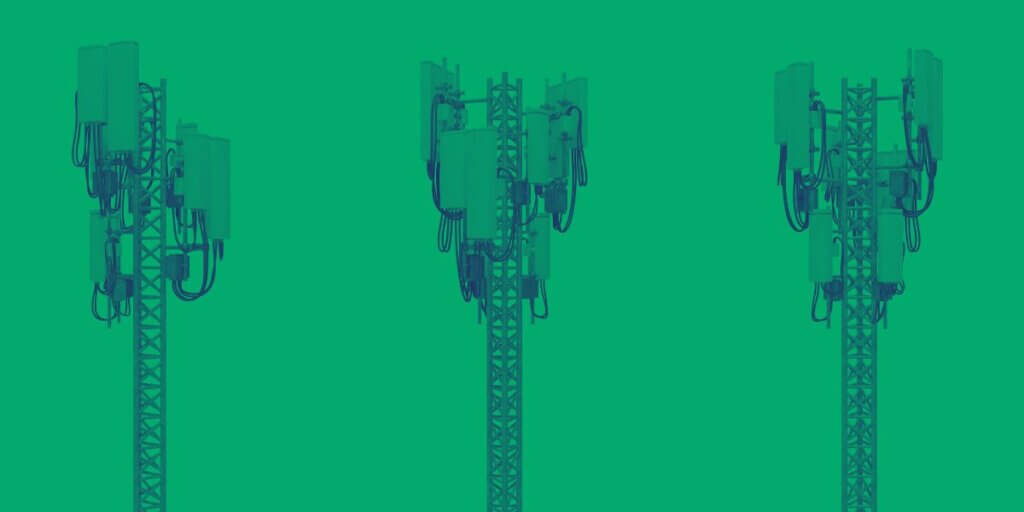Lower your internet bill
61% of people overpay for their internet.
Are you one of them?
Unlock exclusive offers in your area!
Call now
[tel]Enter zip code
1 Star is Poor & 5 Stars is Excellent.
* Required

Written by Rosslyn Elliott - Pub. Sep 24, 2024 / Updated Oct 23, 2025
Table of Contents
Are you happy with your Internet service?

About the author
Bandwidth matters. That’s been clear ever since HD streaming and multiplayer gaming took the internet by storm.
Bandwidth isn’t just about data caps. Many of us no longer have data caps on our home internet plans, especially if we have fiber internet service.
But even without data caps, there are plenty of reasons why you need to know which apps are hogging all your bandwidth and potentially slowing down your Wi-Fi.
If you understand your data choices, you can better manage your home internet performance. You can even get more eco-friendly with your digital footprint.
Here’s an overview of the apps that gobble up the most bandwidth, and how to keep them in check.
Bandwidth: The maximum rate of data transfer across a given connection. Bandwidth is usually measured in bits per second (Kbps, Mbps, Gbps) [1].
Data Usage: The actual amount of data transferred, usually measured in bytes (KB, MB, GB).
An app might use high bandwidth for short periods or lower bandwidth over longer periods. Both patterns could still use plenty of data.

Streaming takes high bandwidth
Video streaming services are the undisputed champions of high data consumption [2]. Here’s a more detailed breakdown:
| YouTube | Netflix | Amazon Prime Video | Disney+ |
| 144p: 80 MB per hour | Low quality: 0.3 GB per hour | Standard definition: 0.38 GB per hour | Standard quality: 0.6 GB per hour |
| 480p: 350 MB per hour | Standard quality: 0.7 GB per hour | High definition (HD): 1.4 GB per hour | HD quality: 1.5 GB per hour |
| 720p HD: 1.5 GB per hour | HD quality: 3 GB per hour | 4K Ultra HD: 6.84 GB per hour | 4K Ultra HD: 7.7 GB per hour |
| 1080p Full HD: 3 GB per hour | Ultra HD quality: Up to 7 GB per hour | ||
| 4K: Up to 7 GB per hour |

Music apps also burn through data
Music streaming can use a lot of data, even though it’s not quite as data-heavy as video streaming [3].
| Spotify | Tidal | Apple Music |
| Normal quality: 40 MB per hour | Normal quality: 80 MB per hour | 256 Kbps AAC: about 115 MB per hour |
| High quality: 70 MB per hour | HiFi quality: 325 MB per hour | |
| Very high quality: 150 MB per hour | Master quality: 975 MB per hour |
Social media apps can be deceptive in their data usage because small amounts of data can add up fast. Here’s a breakdown of some specific usage numbers:
| Snapchat | TikTok | |||
| Text snaps: minimal data | Text-only: 50-100 KB per minute | Browsing: 1.5 MB per minute | Photo browsing: 0.5-1 MB per minute | Average usage: 840 MB per hour |
| Photo snaps: 1 MB per snap | With media: 1-3 MB per minute | With autoplay videos: 2.6 MB per minute | With video content: 1.5-2.5 MB per minute | |
| Video snaps: 2-3 MB per 10-second video |

Gaming downloads can be massive
While the act of gaming often uses less data than you might expect, there are other factors to consider. Here are examples of the relatively small data demands of gameplay.
However, game downloads and updates can be massive:
With the rise of remote work and virtual socializing, videoconferencing has become a significant bandwidth user [4].
| Zoom | Microsoft Teams | Google Meet | Skype |
| 1:1 call: 540 MB to 1.62 GB per hour | 1:1 video call: 225 MB to 675 MB per hour | 1:1 video call: 350 MB per hour | Video calls: 300 MB to 1.1 GB per hour |
| Group call: 810 MB to 2.4 GB per hour | Group video call: 560 MB to 1.6 GB per hour | Group video call: Up to 2.2 GB per hour |
These backup apps can save you if you have a hard drive crash [5]. But they can use significant bandwidth, especially during initial setup or after adding large files:

Cloud backup can save your data
Modern messaging apps include features that can increase data usage:
| iMessage | |
| Text only: 0.5 MB per hour | Text only: minimal data |
| Voice calls: 0.5 MB per minute | With photos/videos: varies widely, can be several MB per message |
| Video calls: 5 MB per minute |
Web browsing can vary widely in data usage:
For Windows 10/11 Users
For macOS Users
For Android Users
For iOS Users

5G wireless opens new potential
With the rollout of 5G networks, we’re seeing changes in how mobile apps use bandwidth. 5G fixed wireless is also improving home internet bandwidth in some rural areas that previously lacked high-speed internet.
Here are some heavy-data activities that will put more pressure on bandwidth, even on 5G networks:
5G also brings more efficient data transmission, which can offset some of the increased usage.
It’s worth noting that high bandwidth usage doesn’t just affect your data cap or internet speed – it also has environmental implications:
Considering this, managing your bandwidth usage can be seen as an eco-friendly action.
As we look ahead, several emerging technologies are poised to become major bandwidth consumers:
Staying informed about these trends can help you prepare for future bandwidth needs.

AI is a heavy data consumer
Understanding which apps use the most bandwidth is crucial in our data-driven world. By implementing smart usage strategies, you can:
Remember, the key is not necessarily to avoid using these apps altogether, but to use them mindfully.
[1] Wikipedia.org. “Data-Rate Units."
[2] PopSci.com. “How Much Data Does Streaming Live TV Use?"
[3] SoundCharts.com. “How Music Streaming Works."
[4] Forbes.com. “The Rise of Remote Working and You."
[5] FieldsDataRecovery.co.uk. “The Top 5 Reasons Why Your Hard Drive Crashes."
[6] LaptopMag.com. “How to Change Your Router’s QoS Settings."

About the author
Congratulations, you qualify for deals on internet plans.
Speak with our specialists to access all local discounts and limited time offers in your area.
[tel]61% of people overpay for their internet.
Are you one of them?
Unlock exclusive offers in your area!
Call now
[tel]Enter zip code